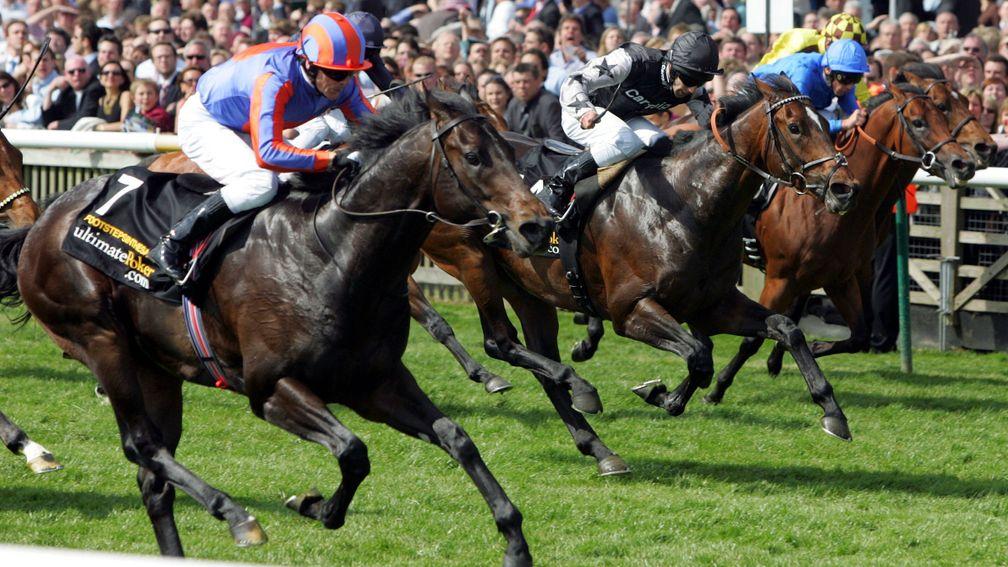Guineas also-rans well worth remembering in hunt for future stallions
James Thomas on sires who have graduated from both success and failure

With each colts' Classic comes another winner who will have his place at stud assured - regardless of pedigree, regardless of prior or future performance. But a glance down the recent roll of honour for the Qipco 2,000 Guineas tells something of a cautionary tale.
The cold, hard fact remains that nobody can guarantee the success of Saturday's winner in his next career. That much is obvious, really. The same can be said of any horse retired to stud, given the unpredictable nature of the thoroughbred.
Past winners of the first Classic of the campaign may include Tudor Minstrel, Nijinsky, Sir Ivor and High Top, who were all capable of supplying high-class runners in abundance. But in recent generations the likes of Mark Of Esteem, King’s Best, Henrythenavigator and Makfi have proved to be solid rather than spectacular sources of racecourse talent.
Others, meanwhile, have plainly failed to live up to the admittedly lofty expectations typically awaiting a Guineas winner at stud. Cockney Rebel and Haafhd, for instance, are now standing at fees of just €3,000 and £3,000 respectively.
But while Saturday's victor may well be perceived as the best stallion prospect in the field, at this stage that is likely to be as much a matter of marketing opportunity as genetic capability.
Certainly connections of those vanquished need not despair - as form on the track is routinely overturned in the breeding shed.
After the 1996 2,000 Guineas, when Mark Of Esteem hugged the stands’ side rail and held on by the skin of his teeth from the fast-finishing Even Top, it might have seemed lunacy to suggest that the best stallion in the race - and by some margin - would turn out to be the horse beaten over nine lengths in sixth, despite never tasting success on the racecourse again. But that is precisely what the future held for Danehill Dancer, as sire of Mastercraftsman, Choisir, Legatissimo, Lillie Langtry and Dancing Rain.
A year later, similarly, few would have imagined that Cape Cross - a 20-1 shot beaten ten and a half lengths behind Entrepreneur - would go on to sire a trio of Classic winners himself and be lauded, after his death last month, as one of the finest stallions of his generation.
Dubawi, now standing at £250,000 with 27 top-level winners and counting, started favourite for his eagerly anticipated reappearance in the 2005 running - but he was beaten three lengths into fifth behind Footstepsinthesand. Giant's Causeway, champion sire of Shamardal, was foiled by King's Best in 2000. Going further back, Danehill himself - one of the great modern sires - finished third to Nashwan.
As it has transpired, moreover, there is every chance the 2,000 Guineas may be in the midst of something of a renaissance as a source of top-class stallions - with both Sea The Stars and Frankel having made highly encouraging starts to life at stud. The likes of Camelot, Dawn Approach, Night Of Thunder and Gleneagles, meanwhile, all boast highly encouraging credentials as rich seams of completely untapped sire potential.
The peaks and troughs experienced by recent Guineas winners at stud are mirrored by other elite races, the world over. As such, it provides a textbook example of the folly of judging a stallion's credentials on its finishing position in just one race - whether that be a positive or negative assessment.
Clearly racecourse ability has a bearing, not least in its impact on the pricing and profile of a young sire. But it should never be forgotten that there is a myriad of factors that go into making a stallion successful: pedigree, conformation, mare opportunity and the ability of horsemen to understand just how to get the best out of a sire's progeny. And, of course, even what constitutes "success" is itself laced with subjectivity.
So it seems the idea of a "stallion-making race" is a rather flimsy one. While any Group 1-winning colt has earned his place at stud, any given race can have quite literally no impact on a stallion's ability to pass on those genetic traits which lead to his sons and daughters being able to run fast. Ultimately it is the stallions that make the race, and never the other way around.
Published on inComment
Last updated
- How Galileo came to redefine the meaning of brilliance in a sire
- We should embrace the Mares' Hurdle - for now and for the future
- Phenomenal Galileo continues to set records in the stallion ranks
- More Than ready to be called a great after Breeders' Cup brace
- Hydrangea only the latest bloom for remarkable Mill Princess dynasty
- How Galileo came to redefine the meaning of brilliance in a sire
- We should embrace the Mares' Hurdle - for now and for the future
- Phenomenal Galileo continues to set records in the stallion ranks
- More Than ready to be called a great after Breeders' Cup brace
- Hydrangea only the latest bloom for remarkable Mill Princess dynasty